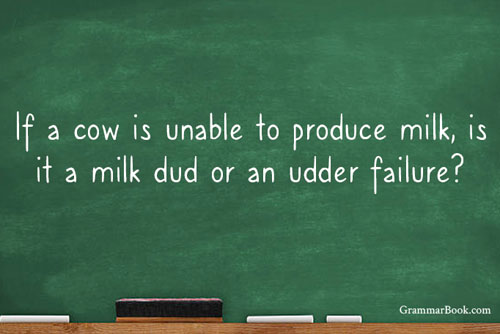|
American English is rife with details concerning written style. One common item concerns how to punctuate lists and particularly whether to include commas in them.
In this review, we'll consider ways you can approach presenting content in lists. Our focus will be on lists in a vertical format as opposed to in sentence form (e.g., Shane has a green car, a red van, and a yellow truck). You can further explore how commas are used in series and lists in sentence form in our article The Oxford Comma.
Commas with Lists: Introduction and Format
As we point out in Colons with Lists, we will typically follow the text leading into a vertical list with a colon. We would do this for both complete sentences and sentence fragments:
Here are the steps for building a robot:
The steps for building a robot are: |
The list format that follows can often be a matter of writer preference. For example, in daily formal writing, if the items in the list are complete sentences, we'll often capitalize the first letter of each item and punctuate it with a period:
Here are the steps for building a robot:
1. Form the idea.
2. Sketch the concept.
3. Create a 3D rendering using computer-aided design (CAD).
4. Develop the prototype.
5. Build and program the model. |
However, we might also approach similar content by making each item a continuation of the opening fragment, in which case we might treat the list as if it is separated sentence content:
The steps for building a robot are:
a) form the idea,
b) sketch the concept,
c) create a 3D rendering using computer-aided design (CAD),
d) develop the prototype, and
e) build and program the model. |
In this list, we lower-case the first letters of each item and use commas to punctuate them. We also include the coordinating conjunction "and" before the last line and then conclude the final line with a period.
We would not use commas to separate lines presented as individual entries in a vertical list as opposed to a continuation of the leading text in sentence form.
Incorrect
The steps for building a robot are:
• form the idea,
• sketch the concept,
• create a 3D rendering using computer-aided design (CAD),
• develop the prototype,
• build and program the model. |
Incorrect
The steps for building a robot are:
• Form the idea,
• Sketch the concept,
• Create a 3D rendering using computer-aided design (CAD),
• Develop the prototype,
• Build and program the model. |
Commas with Lists: Short Content
A writer might choose to either include or omit commas in a vertical list with short entries:
Shane has:
a green car,
a red van, and
a yellow truck. |
Shane has:
1. green car
2. red van
3. yellow truck |
Shane has:
• a green car
• a red van
• a yellow truck |
In the lists of short items that omit commas, we do not include concluding punctuation in the last line. We also would not use commas to separate lines presented as individual entries instead of a continuation of the leading text in sentence form.
Incorrect
Shane has:
1. green car,
2. red van,
3. yellow truck |
Incorrect
Shane has:
• a green car,
• a red van,
• a yellow truck |
Commas with Lists: What Do Other Style Guides Say?
Associated Press style will tend to use dashes instead of bullets for lists that follow a colon. After each bullet, the first letter would be capitalized and periods would conclude each item.
Example
Shane has:
- A green car.
- A red van.
- A yellow truck. |
The Chicago Manual of Style advises to omit periods after items in a vertical list unless one or more of the items are complete sentences.
If the vertical list completes a sentence begun in an introductory element, the final period is also omitted unless the items in the list are separated by commas or semicolons. Each line begins with a lowercase letter as well.
Example—Complete Introductory Statement, Fragmented Items
Shane has the following vehicles:
• green car
• red van
• yellow truck |
Example—Complete Introductory Statement, Complete Sentences
The following is true about Shane's different vehicles:
He has a green car.
He co-owns a red van.
He is selling a yellow truck. |
Example—Leading Introductory Segment, Items Separated by Commas and Semicolons
After careful consideration, the committee decided that
1. the developer, Flint Stone, would need to complete the condos in three months;
2. the project foreman, Rube Barney, would provide biweekly progress reports;
3. Flint Stone's finance manager, Wilma Stone, would provide weekly budget updates. |
Commas with Lists: Closing Note
As you can see, the styles and treatments of vertical lists can vary widely. There really are no set rules on how to present and punctuate them. The key is to be consistent and avoid formats that aren't used or preferred, such as those we've discussed.
Also aim for parallelism of items as often as possible. For example, make each line a complete sentence, a noun phrase, a verb phrase, a sentence fragment—whichever format is proper and clear for the list you're presenting.
Related Topic
Semicolon Use in Lists
|





